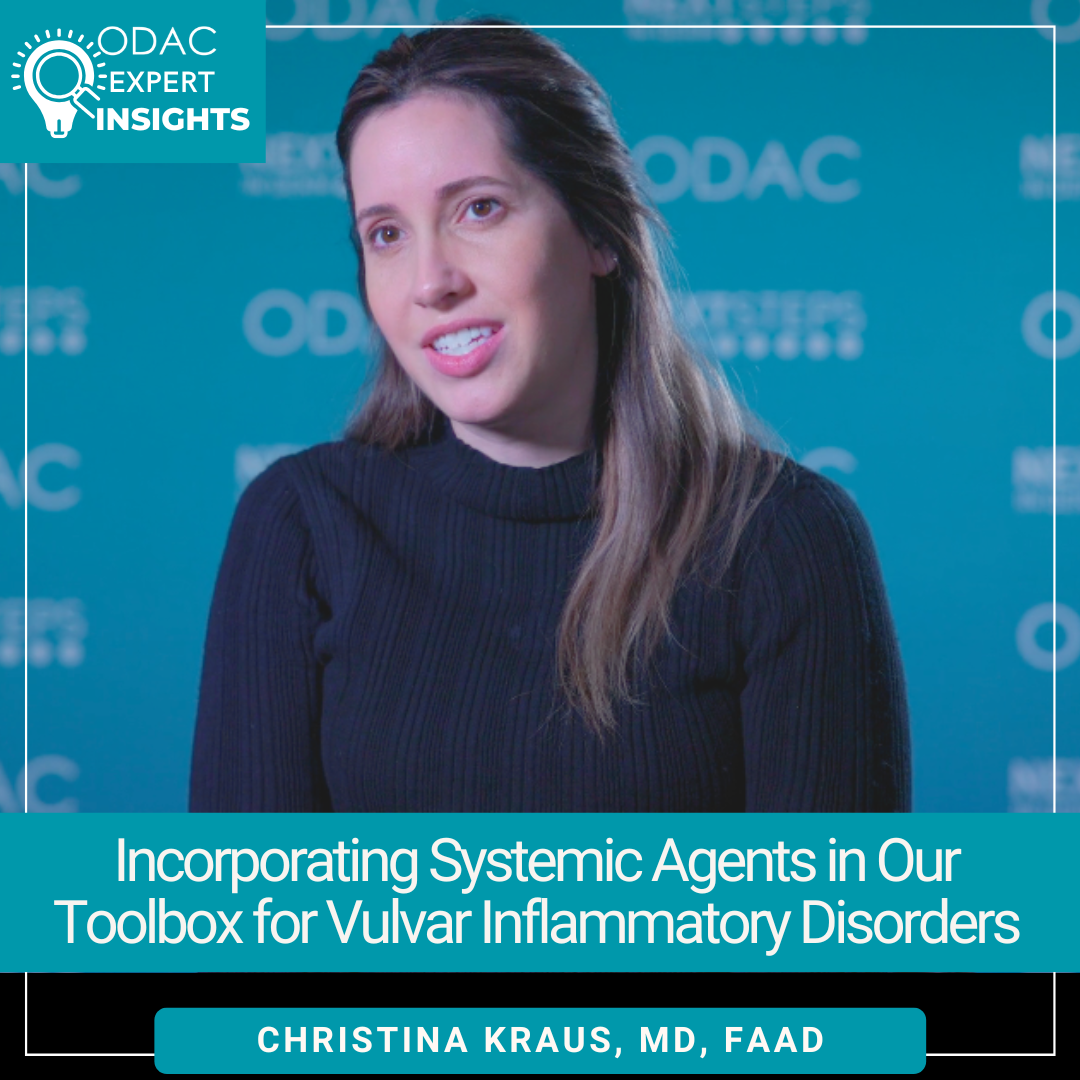Early and aggressive treatment options are needed to minimize the risk of scarring in lichen sclerosus and lichen planus, which are two of the most common vulvar inflammatory disorders that dermatologists treat. That’s according to Dr. Christina Kraus, director of gynecologic dermatology at the University of California, Irvine. Next Steps in Derm, in partnership with the ODAC Dermatology Conference, interviewed Dr. Kraus, who shared how and why dermatologists should consider systemic agents when treating these disorders. Hear why this patient population may be more hesitant to using steroids. Learn what options Dr. Kraus uses with her patients and what she considers when deciding if a systemic agent is the right choice for a patient. Plus find out Dr. Kraus’s guidance for the long-term management of patients on systemic agents.
Further Reading
If you want to read more about vulvar inflammatory disorders, check out the following articles published in the Journal of Drugs in Dermatology:
ABSTRACT
Background/Objectives: Lichen sclerosus (LS) is a chronic condition that warrants close follow-up due to the risk of scarring. The optimal long-term management of pediatric vulvar and perianal lichen sclerosus (PVPLS) is unknown. This study aimed to identify diagnostic, treatment, and maintenance regimens among pediatric dermatologists and pediatric/adolescent gynecologists, as well as assess provider confidence and desire for guidance on long-term PVPLS management.
Methods: A cross-sectional 35-question survey was administered through the Pediatric Dermatology Research Alliance (PeDRA) and the North American Society for Pediatric and Adolescent Gynecology (NASPAG) between 7/13/2021 and 8/30/2021 to ascertain PVPLS diagnostic and management regimens.
Results: Most responders were attending-level pediatric/adolescent gynecologists (46%) and pediatric dermatologists (41%). Although 85% of participants felt completely or very confident in diagnosing PVPLS, the majority (86%) desired further management guidelines. While the initial treatment was similar among providers, maintenance regimens and follow-up varied considerably, with only 42% recommending lifelong monitoring despite potential persistence into adulthood.
Conclusions: While initial treatment was similar among practitioners, there was variation by specialty in subsequent management and a lack of uniformity in long-term follow-up. Additional studies are needed to clarify the optimal management of PVPLS and to provide evidence-based guidelines regarding long-term follow-up.
Offering an Off-Label Therapeutic Algorithm for Lichen Planus
ABSTRACT
Lichen planus (LP) is a poorly characterized, chronic inflammatory dermatosis notable for violaceous to brown/ black polygonal pruritic papules and plaques, often with lacey scale, and reticular white erosions involving mucosal sites.
Did you enjoy this video interview? Find more here.

